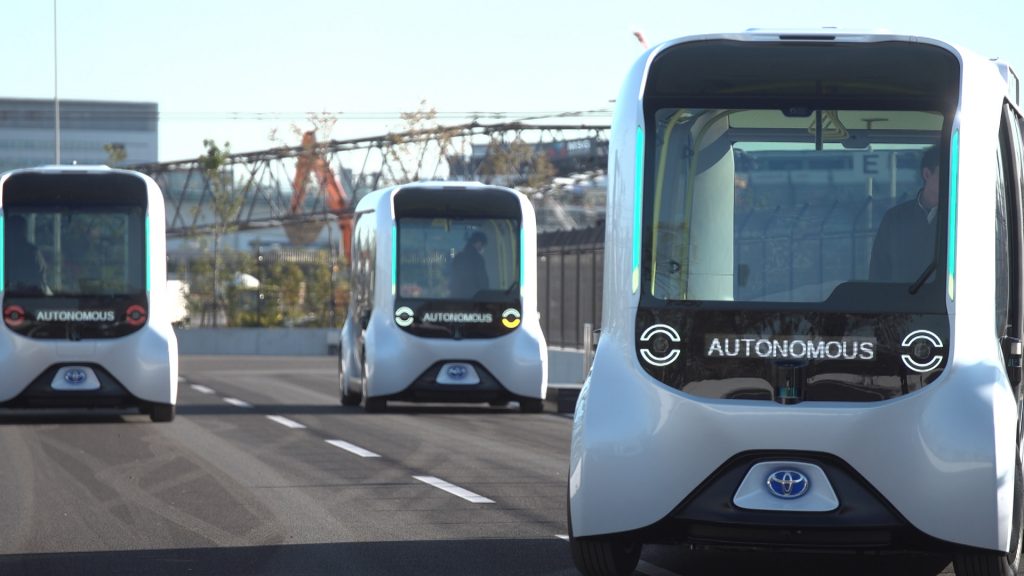Toyota has announced the development of an operating system for its e-Palette autonomous battery electric vehicle.
The Japanese automaker will test the new technology in a real-world environment in its Woven City “living laboratory”, which we first reported on in January. The company’s Autono-MaaS (autonomous mobility as a service) applications will also pave the way for future mobility services to be available in other areas and regions through the early 2020s.
The vehicle, which was presented at the 2019 Tokyo Motor Show, was supposed to be launched at the Tokyo 2020 Olympics and Paralympics, now postponed until July 2021.
Toyota has developed this vehicle with the principle to “go where they are needed, when needed and on time”, to deliver goods and provide services. The concept has been used to design an operations management system for e-Palette vehicles.
This introduces new functions on Toyota’s Mobility Services Platform (MSPF) and will consist of an Autonomous Mobility Management System (AMMS) to connect to vehicles and the e-Palette Task Assignment Platform (e-TAP) to connect to people. The system will reduce customer waiting times and alleviate congestion to ensure services are provided safely, comfortably and with peace of mind.
The e-Palette vehicles have been designed to be dispatched when and where they are needed, in the right number. Flexibility allows schedules to be changed as necessary, with vehicles dispatched and returned automatically, according to real-time mobility needs. When additional vehicles are introduced, the operating intervals can be adjusted to ensure an even spacing of services.
Also, the new vehicles are so efficient that if there is any problem, it is automatically detected, and the vehicle is returned to the depot and a replacement is dispatched immediately to maintain smooth service.
Even in an emergency, vehicles can be stopped and returned to service remotely, with an extra level of safety management to give passengers complete peace of mind.
The system is so advanced that it has been designed with the ‘jidoka element’ of TPS (automation with a human touch). That means any issues with the vehicles or workers are presented as visual alerts, so that a single person can manage several vehicles, rather than one person constantly monitoring one vehicle, reducing the number of team members required.
Toyota has chosen Woven City as the testing site because it is a human-centric prototype community where technologies such as automated driving, MaaS, personal mobility, robotics, smart homes and artificial intelligence can be developed and tested. Therefore, it is the best environment for the e-Palette vehicles to be launched as it will provide a real-world learning environment, which will help the platform evolve and deliver services to customers.
